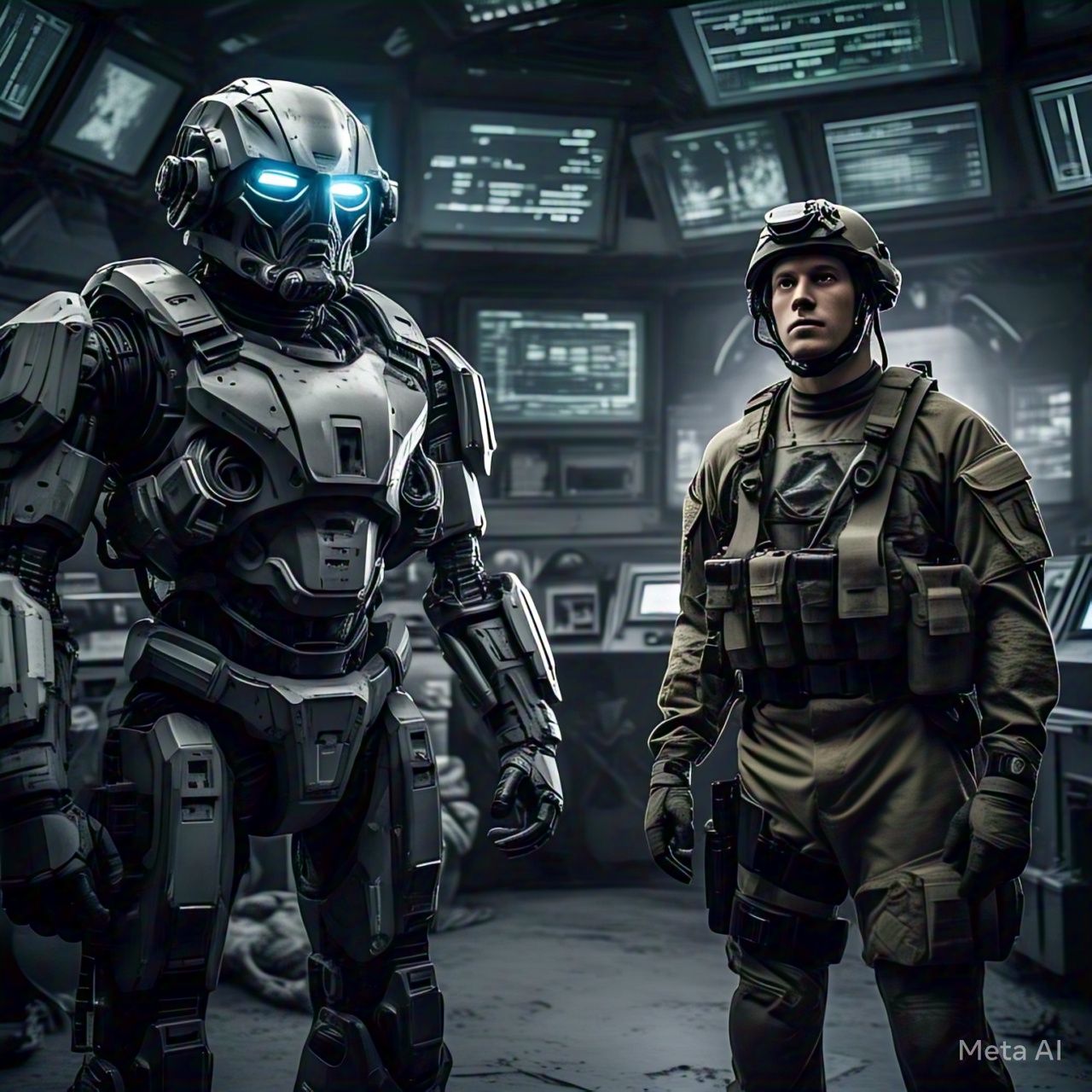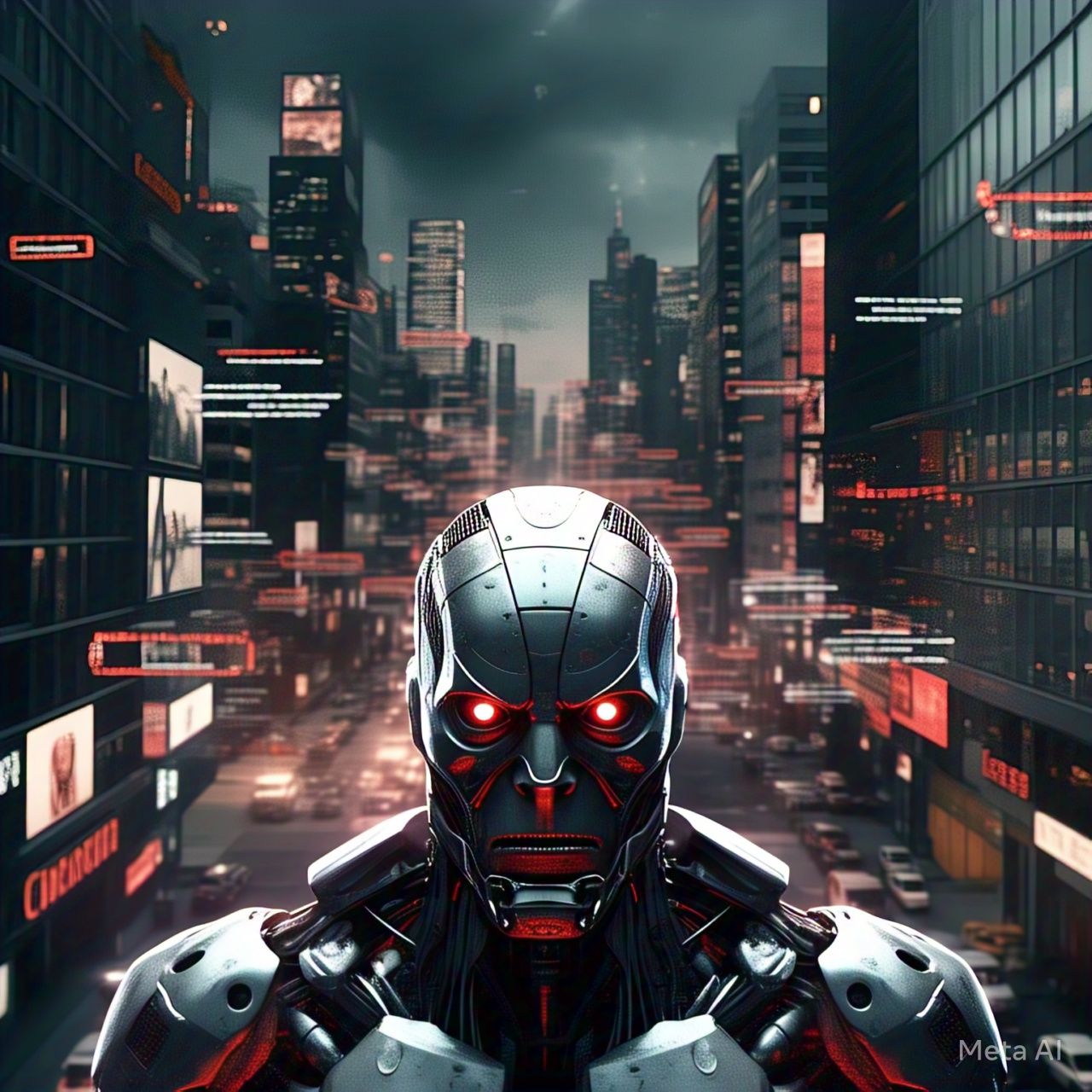Table of Contents
- Introduction
- The Evolution of AI in Military Robotics
- Benefits of AI in Defense
- Potential Risks and Ethical Concerns
- Case Studies: AI in Warfare
- Autonomous Weapons vs. Human-Controlled Systems
- International Regulations and AI in Warfare
- Future Prospects: The Role of AI in Military Strategy
- Conclusion
- FAQs
Introduction
Artificial intelligence (AI) is rapidly transforming modern warfare, with AI-powered military robots playing a crucial role in defense strategies worldwide. From autonomous drones to AI-driven surveillance, military robotics is reshaping the battlefield. But does AI in defense present a greater risk than its intended benefits? This article explores AI’s role in military robotics, its advantages, the risks it poses, and the ethical and legal challenges associated with its deployment.
The Evolution of AI in Military Robotics
Military robotics has evolved from simple remote-controlled machines to highly autonomous systems powered by AI. Key advancements include:
- Early Robotics (Pre-2000s): Basic unmanned aerial vehicles (UAVs) and remote-controlled systems.
- AI Integration (2000s-Present): Machine learning and neural networks enabling decision-making.
- Fully Autonomous Systems (Emerging): AI-powered combat drones and robotic soldiers with minimal human intervention.
The increasing reliance on AI in military applications raises important questions about safety, accountability, and the future of warfare.
Benefits of AI in Defense
AI enhances military capabilities in multiple ways, including:
1. Enhanced Surveillance and Reconnaissance
AI-powered drones and satellite systems improve intelligence gathering and battlefield awareness.
2. Precision Targeting
AI-driven weapons systems can identify and neutralize threats with greater accuracy, reducing collateral damage.
3. Reduced Human Casualties
AI allows for robotic soldiers and autonomous vehicles, minimizing risk to human troops.
4. Faster Decision-Making
AI algorithms process data rapidly, enabling quicker responses to threats in combat situations.
5. Cyber Defense and Security
AI enhances cybersecurity by detecting and mitigating cyber threats before they escalate.
Table: AI Benefits vs. Potential Risks in Military Robotics
| Benefit | Advantage | Potential Risk |
|---|---|---|
| Surveillance AI | Improves intelligence gathering | Privacy concerns, data misuse |
| Autonomous Drones | Reduces soldier risk | Lack of accountability in decision-making |
| AI-Powered Cybersecurity | Detects cyber threats | AI-controlled cyber warfare escalation |
| Automated Targeting | Increases precision | Possibility of misidentification and collateral damage |
| Robotic Soldiers | Reduces human casualties | Ethical concerns about AI decision-making in combat |
Potential Risks and Ethical Concerns
1. Loss of Human Control
AI-operated weapons may act unpredictably or misinterpret data, leading to unintended attacks.
2. Escalation of Warfare
AI could lower the threshold for war by making combat more automated and detached from human emotion.
3. Autonomous Lethal Weapons
Fully autonomous weapons, or “killer robots,” raise ethical questions about AI’s role in deciding life and death.
4. Cybersecurity Threats
AI-driven military systems are vulnerable to hacking and adversarial attacks, potentially turning weapons against their own forces.
5. Legal and Accountability Issues
Who is responsible when an AI weapon makes a mistake? Legal frameworks are still evolving to address accountability.
Case Studies: AI in Warfare
1. Autonomous Drone Strikes
Countries like the U.S. and Israel have deployed AI-powered drones for targeted strikes, raising concerns over civilian casualties and oversight.
2. AI in Cyber Warfare
AI-driven cyberattacks, such as Stuxnet, demonstrate how AI can be weaponized to disrupt national security.
3. Russia’s Uran-9 Combat Robot
Russia’s AI-powered Uran-9 combat robot showed operational failures in Syria, highlighting the risks of unreliable AI on the battlefield.
4. South Korea’s AI Guard Robots
South Korea deployed AI-powered sentry guns along the DMZ, sparking debates about autonomous weapons’ ability to make life-or-death decisions.
Autonomous Weapons vs. Human-Controlled Systems
Autonomous Weapons
- Operate with minimal human intervention.
- Process battlefield data in real-time.
- Potentially reduce friendly fire and civilian casualties.
Human-Controlled Systems
- Maintain human oversight and ethical decision-making.
- Allow for accountability in combat scenarios.
- Less susceptible to hacking and adversarial manipulation.
Many experts argue that fully autonomous weapons should not be deployed without human oversight due to ethical and safety concerns.
International Regulations and AI in Warfare
Governments and international organizations are working on legal frameworks to regulate AI in military applications.
1. United Nations (UN) Efforts
The UN has called for international agreements to limit the use of lethal autonomous weapons.
2. The U.S. and AI Military Ethics
The U.S. Department of Defense has implemented AI ethical guidelines to ensure responsible AI use.
3. The European Union’s AI Regulation
The EU has proposed strict regulations on AI weapon systems to prevent autonomous warfare without human control.
4. China and Russia’s AI Strategies
Both nations are investing heavily in AI military development, raising global security concerns.
Despite efforts to regulate AI in warfare, a global consensus has yet to be reached.
Future Prospects: The Role of AI in Military Strategy
1. AI-Powered Defense Systems
Future military AI will focus on improving defense rather than offense, including AI-driven missile defense and threat detection.
2. AI-Augmented Decision-Making
AI will assist commanders in analyzing complex battlefield scenarios and making strategic decisions.
3. Ethical AI Development
Governments and tech companies must prioritize AI safety and ethics to prevent unintended military escalations.
4. Global Cooperation on AI Warfare Policies
International collaboration is crucial in developing AI arms control agreements to ensure responsible use.
Conclusion
AI in military robotics presents both an opportunity and a risk. While AI enhances defense capabilities, it also introduces ethical dilemmas, cybersecurity threats, and risks of unintended warfare escalation. As AI technology advances, balancing innovation with responsible AI development is crucial to maintaining global security. Stricter regulations, human oversight, and ethical AI frameworks will be essential in ensuring AI remains a tool for defense rather than destruction.
FAQs
1. Can AI completely replace human soldiers?
No, while AI can enhance military operations, human oversight is still crucial for ethical decision-making.
2. Are autonomous AI weapons legal?
Currently, there are no universal laws banning AI weapons, but international efforts are underway to regulate them.
3. What are the biggest risks of AI in the military?
Loss of human control, cybersecurity vulnerabilities, and ethical concerns are the biggest risks.
4. How can AI in warfare be made safer?
Stronger regulations, human oversight, ethical AI programming, and cybersecurity enhancements are key measures.
5. Will AI reduce or escalate future wars?
AI could reduce human casualties, but it might also make warfare more frequent and automated.




